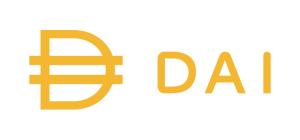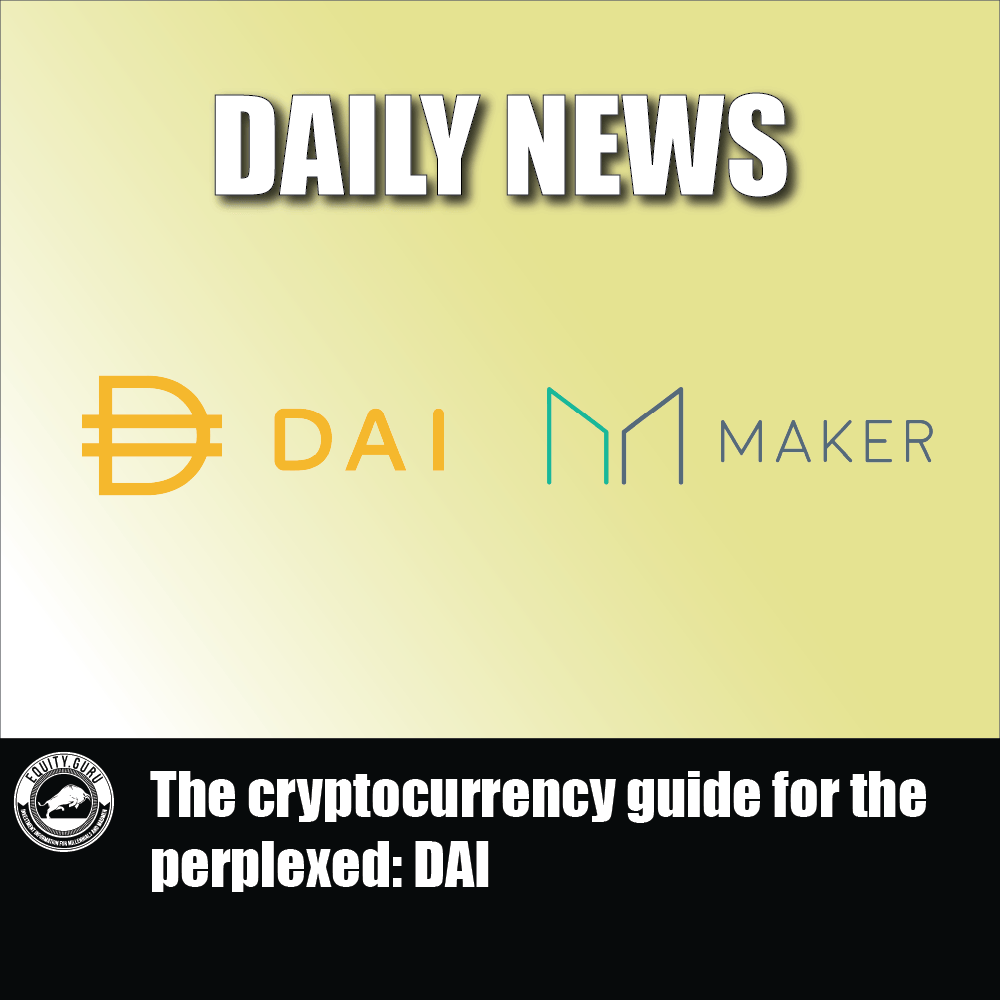DAI is a stablecoin running on top of the ethereum blockchain pegged to the United States dollar. It keeps its peg through a system of smart contracts and the participants who are incentivized to perform maintenance and governance functions.
It’s maintainers are a decentralized autonomous organization (DAO) called MakerDAO, and they’re probably even more interesting than the coin. They’re composed of owners of its governance token, MKR, which gives them the ability to vote on changes to parameters in its smart contract makeup to maintain DAI’s stability.
Dai and MakerDAO are probably the best example of decentralized finance receiving significant adoption.
MakerDAO

The Maker Protocol is also built on the Ethereum blockchain, and it allows its users to create currency. At present, elements of the Maker Protocol are Dai, Maker Collateral Vaults, Oracles and Voting. MakerDAO governments the protocol by deciding its key parameters, namely stability fees, collateral types and rates, and more, through the voting power of MKR holders.
MakerDAO started in 2015 as a global initiative with developers working together on the first versions of the code, architecture and documentation. By December 2017, they released their MakerDAO formal white paper, introducing the Dai Stablecoin System.
The white paper laid out how anyone could generate Dai using their system by leveraging Ethereum as collateral through their proprietary smart contracts called Collateralized Debt Positions (CDP). Ethereum was the only collateral asset accepted by the system, and the Dai generated was to be called Single-Collateral Dai (SCD) or Sai. The white paper also included plans to update the system to include multiple different types of collateral beyond ETH, which was something that happened in November 2019.
Now the Dai Stablecoin System, which is now called the Maker Protocol, accepts any Ethereum-based asset as long as it’s gotten the nod from MKR holders, who also vote on Risk Parameters for every asset. Voting is obviously mission critical for Maker’s decentralized governance process.
A Good Day to Dai

Here’s the easily digestible tell-your-uncle explanation of how this works.
Dai is created from a loan and repayment process put together by MakerDAO’s smart contracts in the form of a decentralized application (D’app). Users deposit Ether (or some other crypto accepted as collateral) and can borrow against their deposits and get Dai in return. The minimum ratio for Ether is 150% or depositing $150 worth of Ether lets you borrow up to 100 Dai. If the ratio of the loan falls underneath the minimum ratio, anyone can basically get the contract to liquidate the loan and get a percentage of the collateral.
Repaying the loan and its interest destroys the returned Dai and the collateral can be withdrawn. This way, the USD value of Dai remains backed by the USD value of the collateral held by the smart contracts. MakerDAO controls the types of collateral, the ratios of that collateral, and the interests rates in borrowing or storing Dai, and therefore controls the amount of Dai in circulation, and therefore, controls its value.
Dai and its smart contracts launched on the Ethereum network on December 18, 2018, and the price of Dai kept decently close to a dollar during its first year, even as Ether plummeted by 80%. Next MakerDAO received an investment of $15 million from Andreessen Horowitz by purchasing 6% of their coins.
What does DAI offer?
Generally, money has four functions:
- A store of value
- A medium of exchange
- A unit of account
- A standard of deferred payment
Dai has properties and use cases designed to serve these functions.
All accepted collateral assets can be used to make Dai in the protocol using smart contracts called Maker Vaults. Users can utilize the Maker Protocol and create vaults using user interfaces. Creating a vault isn’t a complicated process, but generating Dai does come with an obligation to pay it back, along with a stability fee, to withdraw the collateral leveraged and locked in a vault.
Vaults are non-custodial, meaning users interact with vaults and Maker Protocol directly, and each user has complete control over their collateral as long as the value doesn’t dip below the required minimum level.
Issues
In 2019, MakerDAO disclosed that they had discovered a potentially dangerous security flaw that could have allowed an attacker to steal money directly from the company with a single transaction. The exploit would have resulted in a complete loss of funds for all Dai users on its Multi-Collateral Dai system.
“The cost of performing the attack is almost zero — just the minimal denomination of each type of gem stolen plus gas,” wrote the researcher who discovered the flaw.
They had the code patched by the end of October but this circumstance does exist as an object lesson in what we can theoretically expect in the future as cryptocurrency begins to seriously take off.
The best laid plans don’t always work according to plan and given what’s going on right now with TerraUSD, itself thought to be a sound system for maintaining a peg until it was proven otherwise, we should consider alternative angles of failure for a system like Dai’s as well.
Another potential problem that could raise with DAI involves the way the supply is supposed to adjust to collateral price volatility. If Ethereum falls, an algorithm kicks in to burn some DAI to restore the peg. If the scenario is reverse, users are incentivized to buy more Dai. But let’s consider the assumption that the mechanisms work as expected. The DAI in circulation are secured by a proportion of the existing Ethereum in the system, and the releases of ETH into the market due to adjustments in the price of ETH may themselves effect ETH price and create self-reinforcing loops.
Regardless, DAI is worth a shade under $6.5 billion and is 18th by market cap at the time of writing.
—Joseph Morton

